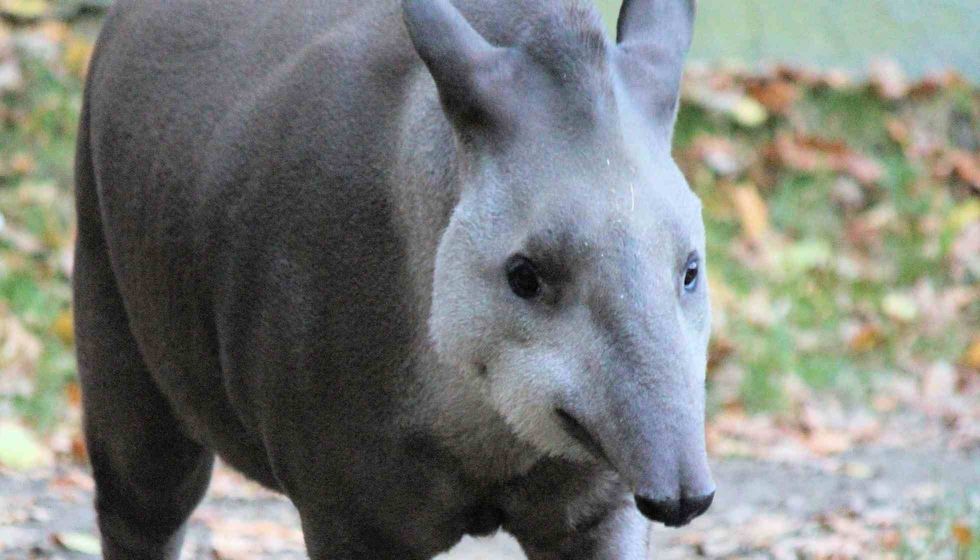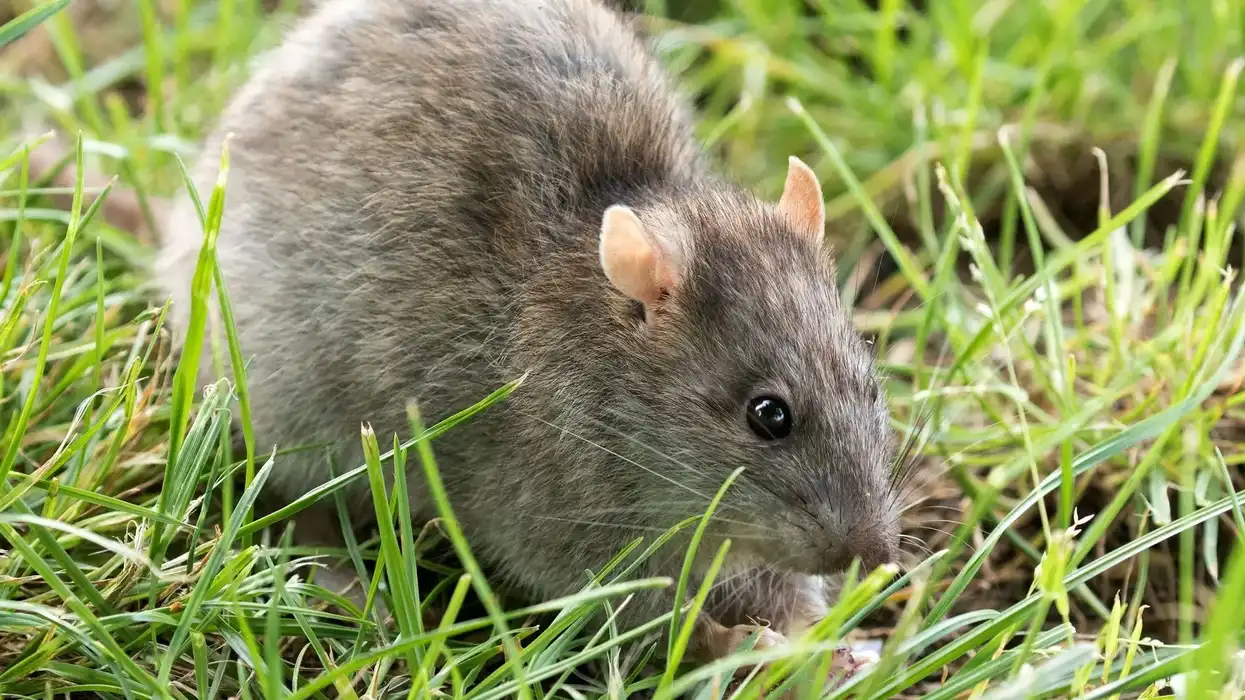If you want to learn about a mammal that has survived since the prehistoric Eocene Age, then you absolutely must read about the Baird's tapir.
Named after Spencer Fullerton Baird, an American researcher who was the first one to go to Mexico and observe the animal, this tapir is the largest amongst the four existing species of tapirs.
Endemic to certain southern and central Latin American countries, a number of reasons have led to the decline of this species including deforestation, hunting, and a slow rate of reproduction.
However, it is not all gloom and doom as conservation efforts are underway to save this species from extinction.
Although this tapir is a land mammal, they are excellent swimmers and can often be seen resting in waterholes on a hot day. If you want to know more such interesting facts about Baird's tapirs, scroll down and take a look. If you are interested in other animals, you can visit Azawakh facts and Amazon kingfisher!
Baird's Tapir Interesting Facts
What type of animal is Baird's tapir?
The Baird's tapir (Tapirus bairdii) is a species of tapir that is endemic to the Central American and northern South American landmass. Tapirs are generally land mammal species that have existed since the Eocene Age, which lasted from 56-33.9 million years ago.
As a result of them surviving for the last 50 million years, they have earned the nickname, 'living fossil'.
What class of animal does Baird's tapir belong to?
Being a species of mammals, the Baird's tapir (Tapirus bairdii) is part of the class of Mammalia or mammals. They belong to the family of Tapiridae and the genus Tapirus. Tapirus bairdii, the scientific name of Baird's tapirs, often can be used interchangeably with its synonym, Tapirella bairdii.
How many Baird's tapirs are there in the world?
Unfortunately, the population of this animal species is declining quite fast in the wild due to hunting, loss of habitat, and vegetation. As a result, there has been a huge rallying call for better conservation efforts for these animals.
There has been an estimation that the total population of Baird's tapirs in South and Central America is around 5,500 individuals, however recent studies suggest that the population number may be even lower than that.
There is data that shows that the populations in Mexico and Guatemala are close to being around 1000-1500 each. Belize also has a significant amount of this species population. Other areas like Nicaragua and Honduras, each have populations below the 500 mark.
Further south, Costa Rica and Panama have a total population of something from 1,500-2,000. As you enter the South American landmass, the Baird's tapir (Tapirus bairdii) is found in Colombia and Ecuador. Populations in this country do not go past 250-300 individuals.
Where does Baird's tapir live?
Tapirus bairdii have the unique ability to survive on a wide range of vegetation and habitat. As is already clear, this species of animals are only found in the northern part of South America and Central America.
Countries with Baird's tapirs in the central part of the continent include Mexico, Panama, Costa Rica, Guatemala, Belize, and Honduras. Colombia and Ecuador are the countries that have a small number of these animals within their range of wild forests.
What is a Baird's tapir's habitat?
The habitat range of Baird's tapirs varies according to the country they inhabit. This endangered species of animals have different habitat areas.
They can live in lowland deciduous forests, montane forests, grasslands, and wetlands. In their native habitat, the Baird's tapir has a shy and quiet demeanor. This tapir species has been seen to be active both during the day and night, but primarily prefers being nocturnal.
Interestingly, you will often find them near a source of water in the tropical forest areas. This is because when the temperatures get too high, Baird's tapirs dip into the cool waters to get some relief.
On such a hot day, you can see them resting in waterholes with only their heads above the water. This species also lives close to areas of vegetation so that they can use their camouflage skills to blend in with their surroundings to escape predators.
Who do Baird's tapirs live with?
Baird's tapirs are generally solitary animals in the wild, however, the formation of a feeding group is not uncommon at all. What has also been noticed is the occurrence of other group behaviors. Such a group can consist of the young and juveniles with adults in their range or Baird's tapirs from different ages.
How long does Baird's tapir live?
In the wild, Baird's tapirs are known to live for a long time. The longevity has been seen to range easily around 30 years. Some have been speculated to live well beyond that age. However, there is little data that suggests that Tapirus bairdii can live for a longer time when held in captivity.
How do they reproduce?
One of the main reasons for the decline of this tropical tapir species is their reproductive rate. Before we talk about that, it should be noted that the males and females of this species are assumed to be monogamous.
While little is known about their courtship habits, we do know that tapir pairs will aggressively defend their territory or home range within a forest.
Interestingly, it has been noted in places like Mexico and Costa Rica, that even though the tropical Baird's tapirs breed throughout the year, the breeding season peaks at the onset of the monsoon period.
Once the mating is complete, it takes an astonishing 390-400 days for the gestation period to be complete. This is similar to the gestation periods of other tapirs like the Malayan tapir and the Brazilian tapir.
Once the young tapir is born, they stay with their mothers for a period of one to two years. Young tapirs are usually weaned off when they are at around the age of one.
On the other hand, juvenile tapirs get sexually active within the range of one to two years. Females give birth to only one offspring. Multiple births have been hardly ever observed.
What is their conservation status?
Sadly, the conservation status of Tapirus bairdii, as assessed by the International Union For Conservation Of Nature or the IUCN in their conservation Red List, has been categorized as Endangered.
With around 4,000-5,000 individuals remaining in the wild, their population is decreasing and as a result, they have been given the Endangered conservation status. This is mainly due to threats faced by them like cutting down of forest and plants leading to habitat loss and hunting.
Another cause of decline is the low rate of reproduction within this species group.
Baird's Tapir Fun Facts
What does the Baird's tapir look like?
While tapirs, in general, look like they are related to elephants, they are actually more closely related to horses and rhinos. So much so that in Indonesia, the name for tapirs is 'badak' which means 'rhinos'.
Now, in the case of Tapirus bairdii, there are few unique things that distinguish them from other species of tapirs. The coloration of the hair-like skin of these tapirs has been observed to range from dark shades of brown to reddish-brown.
Interestingly, all Baird's tapirs have a cream coloration on the tip of their ears, necks, and heads.
Animals in this species are strongly built with muscular but slender limbs that allow them to move fast through the forest floors. The hindlegs have three toes on each foot, while the foreleg has four toes on each front foot.
The most interesting part of their appearance is the head and snout extending to form a trunk-like proboscis that is quite flexible. However, their ears are oval and they also have small eyes. The tail is quite short with regards to their body.
The younger tapir has white marks all across their body, but this disappears as they grow older. These spots make the young hard to spot amongst the thick foliage.

How cute are they?
Cute isn't the best term to describe Baird's tapirs. Yet, many find these Central American tapirs to be quite adorable with their long nose-snouts.
How do they communicate?
Due to the fact that this species is usually solitary in nature, communications between them can be hard to monitor. Even then, we do know that Tapirus bairdii communicates with each other through the use of sounds. This animal also uses tactics like urination and pooping to mark out their territories.
How big is Baird's tapir?
Out of the different species of tapir, the Baird's tapir is thought to be the biggest and the largest. Baird's tapirs often have an average length measuring somewhere between 5.9-8.2 ft (1.8-2.5 m) excluding the tail.
The tail measures around 2-5.1 in (5-13 cm). In regards to their height, Baird's tapirs reach anywhere between 2.4-4 ft (0.7-1.2 m). When compared with the Latin American agouti, they are almost two to three times bigger.
How fast can Baird's tapir run?
The Baird's tapir is known to move quite fast both on land and in the water. They are excellent swimmers. While we cannot confirm for sure the speed at which Baird's tapir runs, there are some sources that say that it has an average speed of around 30 mph (48.2 kph).
How much does Baird's tapir weigh?
Tapirus bairdii's weight ranges between the mark of 330-880 lb (149.6-399 kg).
What are the male and female names of the species?
There are no distinct and separate male and female names of the species. As a result, the males and females are called by the common name.
What would you call a baby Baird's tapir?
Young Baird's tapirs are called juveniles or babies, if they are even younger.
What do they eat?
As Baird's tapirs are herbivores, they feed on plants and fruit as their food. In addition to this fruit and a plant-based diet, these mammals can be seen snapping twigs and stems to eat as food.
Are they dangerous?
Central American tapirs are not known to be dangerous. Yet, they do attack humans when they feel threatened. Due to their large sizes, these attacks can turn out to be painful.
Would they make a good pet?
Tapirus bairdii is an endangered animal. As a result, countries have banned citizens from keeping this shy mammal as their pet. They are also protected under the CITES Article, which states that you cannot trade them.
Did you know...
Baird's tapirs play an important role in the dispersal of plant and fruit seeds.
Why are Baird's tapirs endangered?
These mammals are endangered due to the loss of habitat and hunting.
How many babies does the Baird's tapir have?
The Tapirus bairdii has only one offspring in a single breeding season. Breeding seasons usually go on throughout, but there is a significant peak during the monsoons!
Here at Kidadl, we have carefully created lots of interesting family-friendly animal facts for everyone to discover! For more relatable content, check out these finnish lapphund facts and common kingfisher facts for kids.
You can even occupy yourself at home by coloring in one of our free printable mammals coloring pages.
Second image by Baranek










